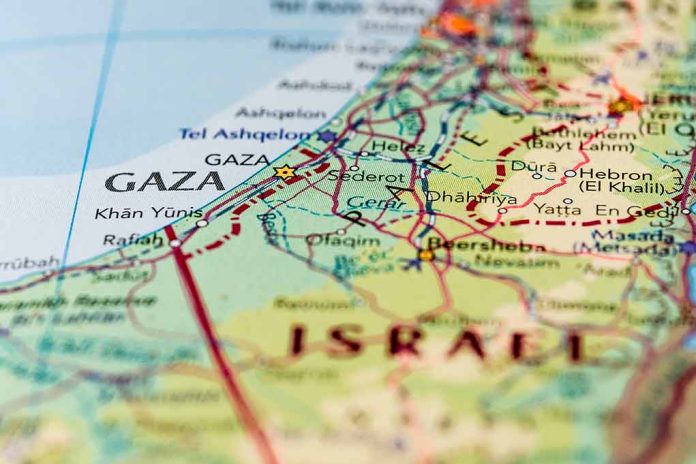
Amid rising tensions, Israel’s military strategy in Gaza seeks to reclaim hostages, reshape the region, and reassess international alliances.
Key Takeaways
- Israel has resumed military operations in Gaza, targeting areas with significant Hamas presence.
- The conflict has led to substantial Palestinian casualties, including innocent women and children.
- Plans for reoccupation focus on establishing control and encouraging Palestinian emigration.
- International criticism raises concerns about the potential destabilization of regional relations.
- An Arab peace plan proposes a framework involving disarmament and transitional administration.
Military Operations Resume
Israeli military operations in Gaza have reignited tensions, breaking what was a fragile ceasefire that allowed humanitarian aid and prisoner exchanges. The intent behind resuming military action is multifaceted, aimed at pressuring Hamas to release hostages taken during previous conflicts. According to sources, the Israeli Defense Forces (IDF) have broadened their buffer zone efforts, ordering evacuations in Rafah to support their strategic objectives.
The operations have not come without humanitarian costs. Reports indicate significant casualties among Palestinians, with women and children bearing the brunt. Israel’s military strategy involves an expansion that could involve reoccupation of large parts of Gaza and displacement of millions into designated “humanitarian zones.”
Geopolitical and Humanitarian Challenges
Amidst the conflict, international voices express concern over the humanitarian impact and potential destabilization. Critics argue that Israel’s actions risk souring relations with neighboring nations. The reoccupation plan and its implications for Palestinian emigration are particularly contentious, with some officials advocating for an indefinite occupation, while others call for a more sustainable solution.
“The IDF is returning to intense operations to dismantle the capabilities of the terrorist organizations in these areas. For your safety, move immediately to the shelters in Al Mawasi,” reads an X post by Colonel Avichay Adraee.
Efforts to negotiate a ceasefire agreement face significant hurdles. Hamas agreed to proposals involving hostage release, but Israel’s demands now include further concessions, complicating peace efforts. Meanwhile, the Palestinian Authority’s lack of control further exacerbates tensions, rendering a political solution challenging.
A Potential Framework for Resolution
An Arab peace plan offers a potential pathway out of the conflict. Focusing on a transitional administration and the disarmament of Hamas, the plan necessitates backing from formidable international players, particularly the United States. With Saudi Arabia’s pivotal role in persuading global powers, the plan’s success is far from guaranteed, yet it remains a beacon of hope amidst conflict.
The stakes are high for all involved. Without a diplomatic solution, the ongoing military approach could incur significant political and economic repercussions for Israel and its allies. As the situation unfolds, close attention to international reactions and potential shifts in diplomatic relations will be crucial in understanding the conflict’s broader impact.





